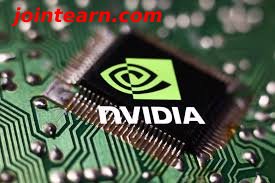As the dust settles from Nvidia’s (NVDA) earnings report, it’s crucial to evaluate where the tech giant stands and whether the recent pullback presents a potential buying opportunity or signals a deeper sell-off as expectations recalibrate.
Nvidia’s stock, widely regarded as one of the most influential in the market (sorry, Apple (AAPL)), experienced a notable shift following its latest earnings. Investors are left to assess whether this dip is a short-term correction or the beginning of a longer-term decline.
Key Earnings Takeaways
Nvidia’s margins are expected to be lower than usual in the first half of the year as the company ramps up production of its Blackwell AI chips. This wasn’t a surprise to analysts, and many believe the initial market reaction was an overreaction. During the earnings call, Nvidia executives, including CFO Colette Kress, reassured investors that the margin pressure is temporary and that improvements are expected later this year. “Once our Blackwell fully rounds, we can improve our cost and our gross margin,” Kress stated, suggesting that Nvidia’s margins will return to the mid-70s later in 2025.
Despite the near-term margin challenges, Nvidia’s core business remains exceptionally strong. The company reported a 12% sequential increase in Q4 revenue and a staggering 78% year-over-year growth. Data center sales more than doubled, and earnings significantly exceeded analyst expectations. Nvidia’s founder and CEO, Jensen Huang, emphasized that demand remains high and customers are eager for Blackwell systems.
The Bigger Picture: Nvidia’s Dominance in AI
Despite concerns over competitors like AMD (AMD) or custom AI chips from Amazon (AMZN), Nvidia remains firmly positioned at the top of the AI chip market. Nowhere in Nvidia’s 2025 guidance or comments from Huang did we hear any indication that competitors are chipping away at Nvidia’s market share or that demand for its chips is slowing down.
The market’s reaction to Nvidia’s earnings, particularly the drop in stock price, could be an overreaction, driven by investors recalculating the company’s short-term outlook for the next quarter. However, there are several key developments that investors should keep an eye on, which could signal significant upside in the long term.
What’s Next for Nvidia?
-
DeepSeek and AI Models
A notable comment from Huang highlighted that Nvidia’s DeepSeek R1 will require 100x more compute resources compared to traditional models due to the increased inference time. While the technical specifics may be lost on some, the implication is clear: Nvidia’s technological leadership in AI could offer substantial upside as DeepSeek and similar models grow in popularity. -
The March 2025 GTC Event
Another key milestone for Nvidia is the upcoming GTC event on March 17, where Huang is expected to reveal groundbreaking advancements. “We’re going to provide a big, huge step-up [in performance],” Huang teased. New products like Blackwell Ultra, Vera Rubin, and beyond could drastically improve Nvidia’s market position and further solidify its dominance in AI and computing technology. -
Global AI Infrastructure Buildout
Lastly, the role of nation-states in building AI infrastructure could drive long-term demand for Nvidia’s products. A16z General Partner Anjney Midha believes the market may be undervaluing the opportunity posed by the global push for AI capabilities.
Conclusion: Nvidia’s Long-Term Outlook
While short-term volatility might cause concern, the long-term prospects for Nvidia remain robust. The company continues to lead the AI revolution, and its technological innovations are poised to drive future growth. As such, any recent pullback in the stock could present a valuable opportunity for investors who understand the company’s dominant position in the evolving AI landscape.
Nvidia’s future growth potential seems far from over, and its long-term outlook remains positive, despite the recent sell-off. The market may have overreacted, and those with a long-term perspective could find this dip as an opportunity to capitalize on Nvidia’s continued leadership in AI.












